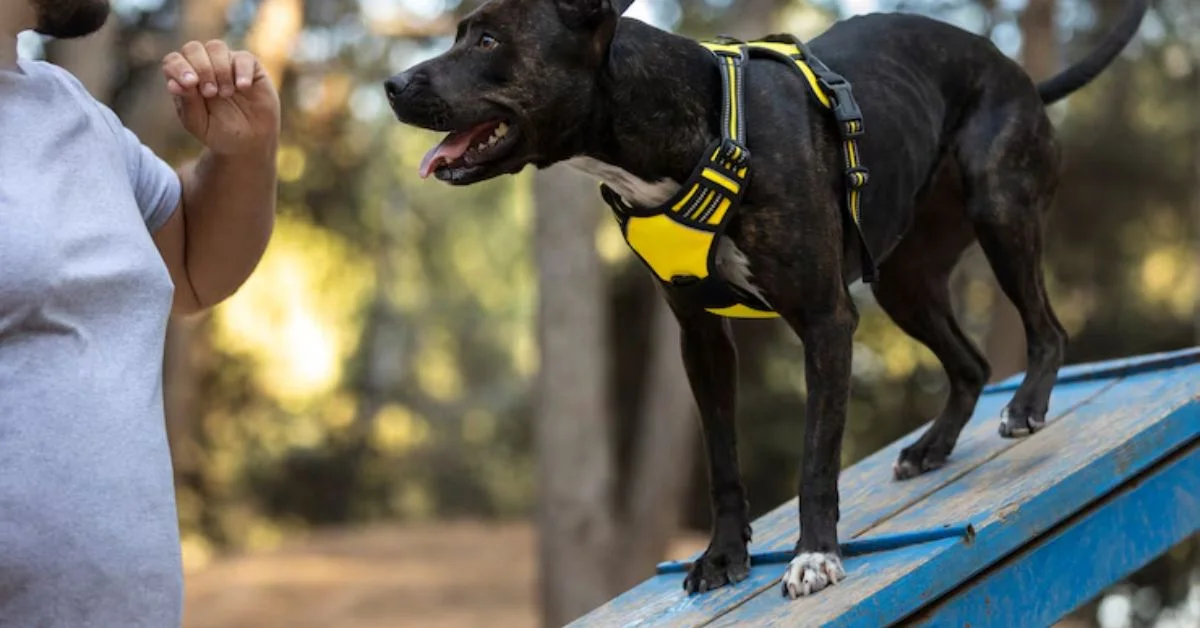In the world of working dogs, where agility, intelligence, and grit define a canine’s legacy, the Hanging Tree Dog stands as a uniquely American creation—both controversial and respected. Developed with purpose rather than pedigree, this breed was built not for show rings or living rooms, but for cattle ranches, harsh terrain, and jobs that demand heart and endurance. It’s not just a dog; it’s a tool, a partner, and for many ranchers, a necessity.
The Hanging Tree Dog is a purpose-bred working canine developed specifically for ranching and cattle herding in rugged environments. This isn’t your average household pet. With roots tied to a deliberate mix of breeds like Border Collie, Catahoula, Kelpie, and Australian Shepherd, the Hanging Tree Dog was crafted for tenacity, speed, and problem-solving ability. Its name evokes a vivid sense of Western heritage and hard labor, and today, it has earned both admiration and scrutiny within the working dog community. In this article, we explore its origin, purpose, characteristics, temperament, training needs, and where it fits in today’s world.
Origins of the Hanging Tree Dog
The creation of the Hanging Tree Dog is largely credited to Gary Ericsson, a renowned dog trainer and cattleman from the American West. He sought to develop the perfect cow dog—one that could do the job of three, endure long days, and confront wild or stubborn cattle head-on without hesitation.
Gary wasn’t looking to create a show breed. He needed a functional dog that combined grit with intelligence, speed with endurance, and control with aggression. Thus, the Hanging Tree Dog was born, named after the “Hanging Tree Ranch” in Missouri where the breeding program was developed.
Breeds Involved in Its Creation:
- Border Collie (up to ⅓) – For intelligence, trainability, and herding instinct.
- Catahoula Leopard Dog – For toughness, scent-trailing, and handling wild stock.
- Australian Kelpie – For stamina, agility, and top-level herding skills.
- Australian Shepherd – For biddability, structure, and rounding instincts.
This deliberate combination was not about aesthetics—it was about capability.
What Makes the Hanging Tree Dog Unique?
Unlike recognized AKC breeds, the Hanging Tree Dog doesn’t follow a strict breed standard. It’s measured by performance, not appearance. That said, there are some consistent traits that many Hanging Tree Dogs share.
Physical Traits:
- Size: Medium; typically 40–60 pounds.
- Build: Muscular, compact, and athletic.
- Coat: Short to medium, weather-resistant.
- Eyes: Often sharp and alert, sometimes heterochromatic due to Catahoula lineage.
- Color: Varies—black, merle, brindle, red, or blue patterns are all common.
Behavioral Traits:
- Extremely high drive: These dogs wake up ready to work.
- Protective and loyal: Not ideal for unfamiliar guests or passive households.
- Problem-solving instinct: Will think independently if needed.
- Bark and bite strength: Built to manage stubborn or dangerous livestock.
Intangible Qualities:
- “No-quit” mindset: Known for staying on task regardless of fatigue or injury.
- Versatility: Can trail, herd, protect, and even work as search-and-rescue dogs in certain contexts.
The Hanging Tree Dog’s Role on the Ranch
For cattle ranchers across the American Southwest and Midwest, the Hanging Tree Dog isn’t just a canine—it’s a workforce. These dogs are valued for:
- Gathering: Quickly sweeping wide areas to bring livestock together.
- Driving: Pushing cattle through gates, chutes, or across pastures.
- Biting: Nipping at heels to move resistant animals—done with judgment, not recklessness.
- Holding: Keeping animals in place until human help arrives.
Their fearlessness is unmatched. Hanging Tree Dogs will take on horned bulls, aggressive cows, or strays in the brush without flinching. But what makes them truly special is control—they don’t attack; they manage.
Training a Hanging Tree Dog
Training a Hanging Tree Dog is both rewarding and demanding. Their intelligence and energy can be a blessing or a curse, depending on the owner’s experience and lifestyle.
What Training Entails:
- Early socialization – Exposure to sounds, livestock, and people in controlled environments.
- Obedience basics – Sit, stay, recall, and leash manners.
- Stock work introduction – Using exposure to herding environments to develop instinct.
- Correction without fear – These dogs don’t respond well to harsh punishment but thrive under confident guidance.
Common Challenges:
- Overstimulation: Too much energy without work leads to destructive behavior.
- Stubborn streaks: Intelligence can translate into defiance if not managed early.
- Aggression toward small animals: Strong prey drive may require careful introductions.
These dogs do best in working homes, with handlers who understand their needs and don’t expect passive obedience.
Is the Hanging Tree Dog a Family Pet?
Technically, yes—but it comes with caveats.
The Hanging Tree Dog is not a breed for the average suburban family. Without a job to do, these dogs can develop anxiety, aggression, or obsessive behaviors. They need stimulation, structure, and purpose.
That said, in the right setting:
- They are loyal protectors of children.
- They form deep bonds with their human family.
- They will patrol and protect your property as if it’s their own.
In short, this dog will guard your home, your truck, and your family—but only if you give it a job and a structure.
Health and Longevity
The Hanging Tree Dog benefits from hybrid vigor, thanks to its mixed heritage. While purebred dogs often face inbreeding-related illnesses, this breed has few systemic issues reported.
Common Health Characteristics:
- Lifespan: 12–15 years
- Joint health: Strong hips and shoulders due to active use, though aging dogs may suffer.
- Vision: Occasional eye issues from merle-to-merle breeding.
- Resilience: High pain threshold, often hides injuries.
Routine vet care, especially in working dogs, is essential. These dogs may work through injury, so owners must stay vigilant.
The Controversy Around Breeding and Recognition
Some critics argue that the Hanging Tree Dog, not being a registered or formally recognized breed, lacks the oversight necessary to maintain healthy, humane breeding practices.
However, supporters counter that:
- Recognition does not guarantee good breeding.
- The functional focus leads to healthier, more capable animals.
- Breed registries can sometimes prioritize appearance over ability.
There’s an ongoing debate about whether the Hanging Tree Dog should be added to organizations like the American Stock Dog Registry or the United Kennel Club (UKC). But for many handlers, the absence of formal recognition is a badge of authenticity, not a flaw.
The Modern Role of Hanging Tree Dogs
Today, the Hanging Tree Dog is seeing a surge in popularity—not among pet owners, but among:
- Small ranchers and homesteaders
- Farmers transitioning from traditional breeds
- Dog trainers looking for versatile prospects
- Search and rescue groups exploring intelligent herders
The breed is adapting beyond its original cattle herding role, finding new relevance in law enforcement, agility competitions, and even emotional support for individuals with PTSD (in ranch-style settings).
This is a breed that continues to evolve without losing its purpose.
Conclusion
The Hanging Tree Dog is not a breed defined by conformation standards or a fancy registry number—it’s defined by utility, purpose, and heart. It is a working dog in the truest sense, crafted not in show rings but in cattle pens and wide-open pastures. Its physical strength, intelligence, loyalty, and sheer drive make it one of the most formidable herding and utility dogs ever developed in the United States.
For those looking to buy a dog that thrives in quiet living rooms or gated neighborhoods, this is not the right fit. But for the rancher who needs a partner, the homesteader seeking a tireless helper, or the trainer looking for a challenge, the Hanging Tree Dog offers an unmatched blend of instinct and work ethic.
It is, quite simply, a dog with a job—and it wants nothing more than to do it well.
Frequently Asked Questions (FAQs)
1. What is a Hanging Tree Dog?
A Hanging Tree Dog is a purpose-bred working dog developed in the U.S. to herd and manage cattle, known for intelligence and toughness.
2. Is the Hanging Tree Dog a registered breed?
No, it is not formally recognized by the AKC, but it is functionally bred and sometimes registered with stock dog registries.
3. Can I keep a Hanging Tree Dog as a pet?
Only if you can meet its needs for daily exercise, mental stimulation, and structured training. It’s best suited for rural or working environments.
4. What makes the Hanging Tree Dog different from other herding breeds?
Its combination of toughness, bite strength, independence, and intelligence make it more versatile and driven than many traditional herding dogs.
5. How can I find a reputable Hanging Tree Dog breeder?
Start with ranching communities, stock dog trials, or herding clubs—look for breeders who prioritize working ability over appearance or mass breeding.
For more information, click here.









